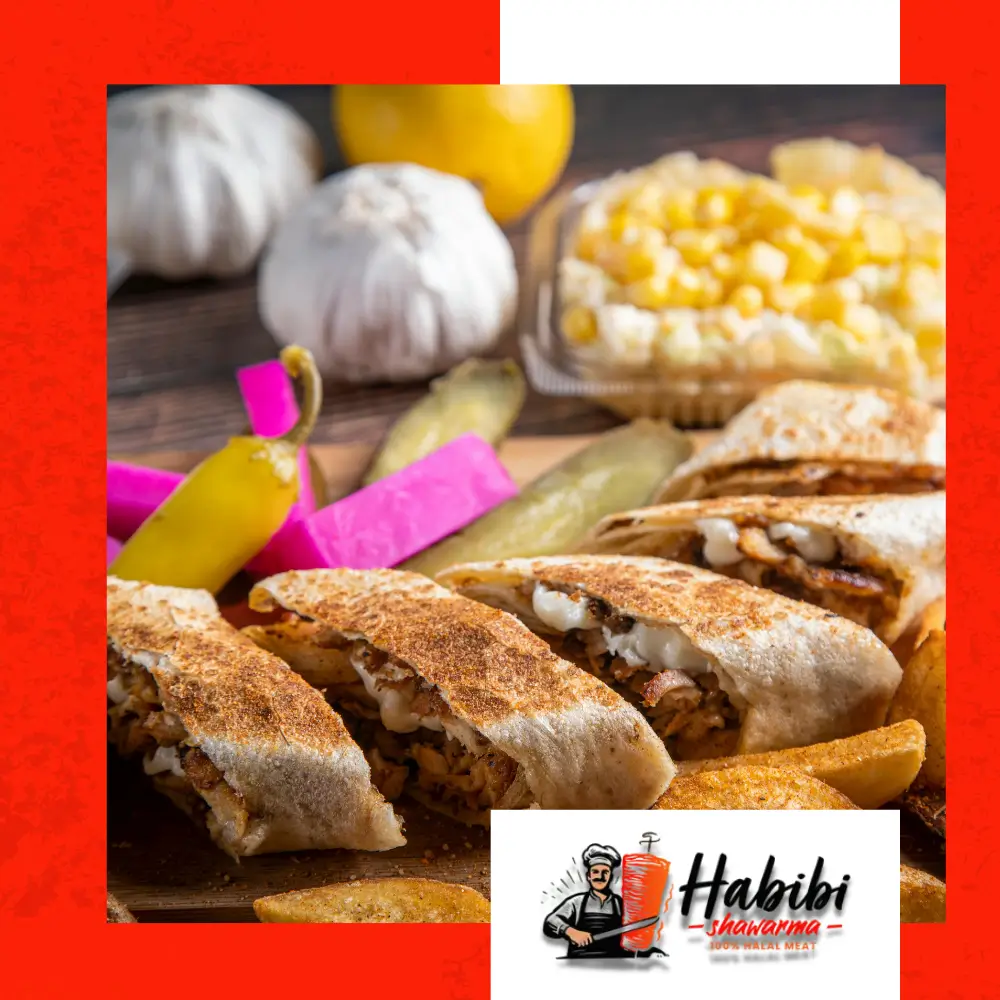Ever searched “shawarma near me” and been surprised by the variety of flavors? While most people recognize shawarma as tender, spiced meat shaved from a rotating spit and wrapped in warm pita, not all shawarma is created equal. One key difference lies in the marinades—specifically, how Mediterranean shawarma and Middle Eastern shawarma season and prepare their meat.
Both are delicious. Both are iconic. But if you’re wondering why one wrap tastes citrusy and light while another is bold and earthy, it’s all about the marinade.
What Is Shawarma?
Shawarma is a traditional dish made by stacking marinated meat—typically chicken, beef, lamb, or turkey—on a vertical rotisserie. As it rotates and roasts, thin slices are shaved off and served in pita, flatbread, or on rice. It’s a cornerstone of Middle Eastern and Mediterranean cuisine, beloved globally for its spices, sauces, and customizable toppings.
Similar Roots, Different Directions
While both Mediterranean and Middle Eastern shawarma share a common origin, the cultural influences behind each have led to unique flavor profiles. One of the most striking distinctions is how each tradition marinates the meat before roasting it to perfection.
Middle Eastern Shawarma: Bold, Spicy, and Garlicky
In the Middle East, shawarma is typically marinated in deeply aromatic spice blends and tangy liquids like vinegar or yogurt. This version is rich, full-bodied, and often garlicky—especially the popular chicken shawarma found in Lebanese and Syrian cuisine.
Common Middle Eastern Marinade Ingredients:
- Spices: Allspice, cardamom, cinnamon, cumin, cloves, paprika
- Acidic components: White vinegar, lemon juice, or yogurt
- Garlic and onion: Used generously for punchy flavor
- Olive oil: For richness and moisture
The result is meat that’s flavorful, juicy, and bursting with warmth. When you find a shawarma near me in a traditional halal restaurant, you’re likely tasting this style.
Mediterranean Shawarma: Fresh, Herbaceous, and Citrusy
Mediterranean shawarma takes a lighter approach, emphasizing fresh herbs and citrus over heavy spices. This style draws influence from Greek, Turkish, and coastal cuisines where bright, tangy flavors are prized. It’s especially popular in health-conscious cafes and fusion restaurants.
Common Mediterranean Marinade Ingredients:
- Herbs: Oregano, rosemary, thyme, parsley
- Citrus: Lemon juice and zest provide a refreshing tang
- Garlic: Still present, but often milder
- Spices: Cumin and coriander, but used more subtly
- Greek yogurt or olive oil: Helps tenderize and infuse flavor
Compared to the Middle Eastern style, Mediterranean shawarma is cleaner and milder—often paired with tzatziki, feta cheese, and olives rather than tahini or garlic sauce. It’s the shawarma version you’d expect in coastal Mediterranean towns or modern fusion eateries.
Flavor Profile Comparison
| Aspect | Middle Eastern Shawarma | Mediterranean Shawarma |
|---|---|---|
| Main Flavor Notes | Warm, spicy, garlicky | Fresh, lemony, herby |
| Marinade Base | Yogurt, vinegar, spice-heavy | Olive oil, lemon, herbs |
| Common Sauces | Garlic sauce (toum), tahini | Tzatziki, lemon-herb aioli |
| Best Pairings | Pickled turnips, tabbouleh | Feta, cucumber, fresh greens |
So, Which Shawarma Is Right for You?
If you prefer bold, spiced flavors with creamy garlic sauces, opt for Middle Eastern shawarma. But if you lean toward lighter, citrusy marinades with a refreshing twist, you’ll love the Mediterranean version.
Better yet, next time you search for “shawarma near me”, ask the vendor about their marinade. Many modern eateries now offer customizable options that blend both traditions—so you can enjoy the best of both worlds.
Final Thoughts
Whether you’re craving shawarma in a pita wrap, rice bowl, or salad, understanding the difference between Middle Eastern and Mediterranean marinades can elevate your food experience. While both use slow-cooked meats and savory spices, the unique approach to marinades creates entirely different flavor journeys.
So the next time you’re browsing for shawarma near me, think beyond the wrap—think about the marinade. Because in the world of shawarma, it’s not just about how it’s cooked—it’s about how it’s seasoned.
READ MORE:
Comparing the Spice Profiles of Mediterranean and Middle Eastern Shawarma
Mediterranean vs. Middle Eastern Shawarma: What’s the Difference?

